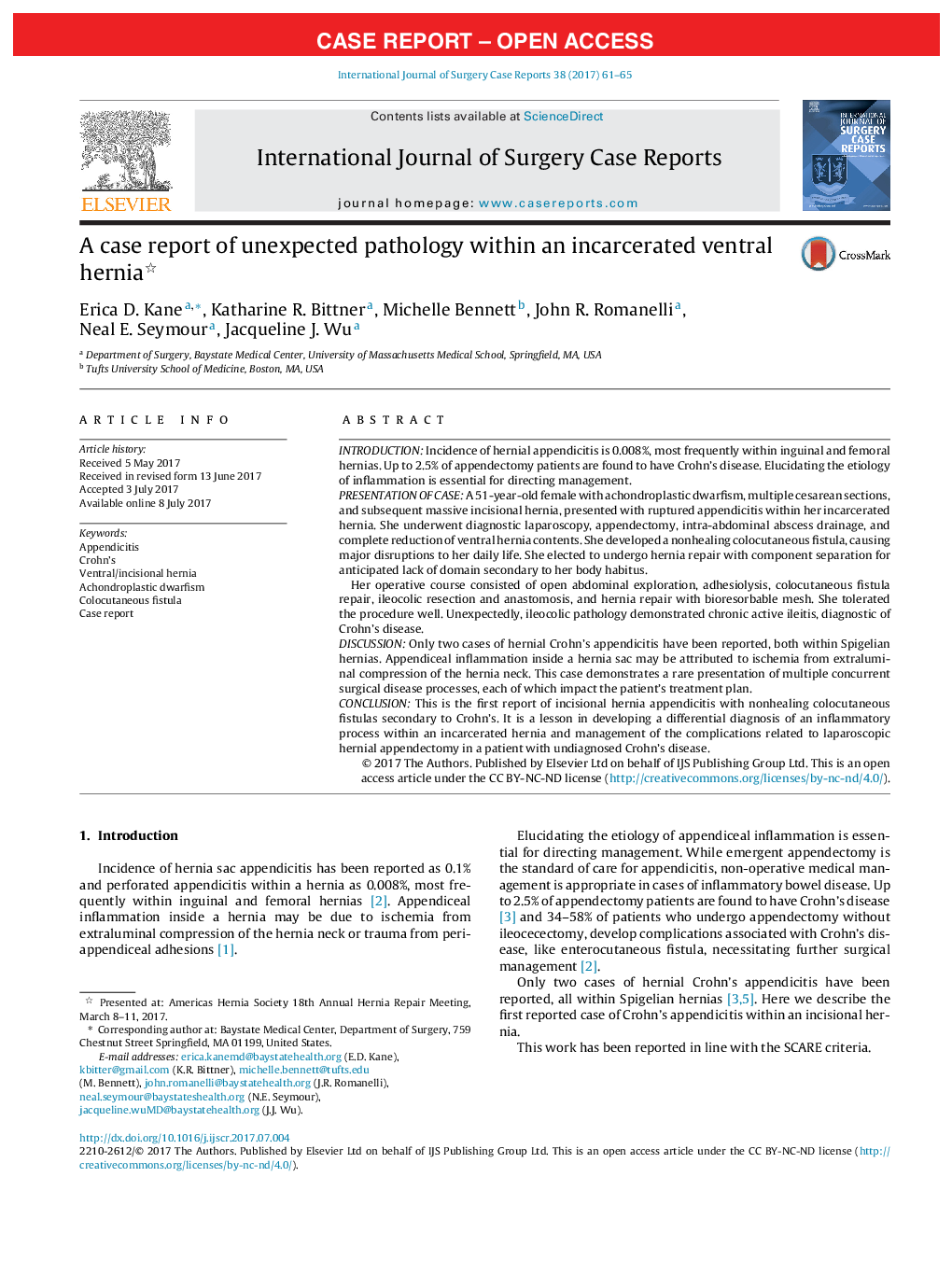| Article ID | Journal | Published Year | Pages | File Type |
|---|---|---|---|---|
| 5732526 | International Journal of Surgery Case Reports | 2017 | 5 Pages |
â¢Incarcerated appendicitis could be due to an unexpected inflammatory etiology.â¢Elucidating the etiology of inflammation is essential for directing management.â¢Ongoing inflammatory process after appendectomy may be due to Crohn's disease.â¢Laparoscopic management of perforated hernial appendicitis provides excellent visualization.
IntroductionIncidence of hernial appendicitis is 0.008%, most frequently within inguinal and femoral hernias. Up to 2.5% of appendectomy patients are found to have Crohn's disease. Elucidating the etiology of inflammation is essential for directing management.Presentation of caseA 51-year-old female with achondroplastic dwarfism, multiple cesarean sections, and subsequent massive incisional hernia, presented with ruptured appendicitis within her incarcerated hernia. She underwent diagnostic laparoscopy, appendectomy, intra-abdominal abscess drainage, and complete reduction of ventral hernia contents. She developed a nonhealing colocutaneous fistula, causing major disruptions to her daily life. She elected to undergo hernia repair with component separation for anticipated lack of domain secondary to her body habitus.Her operative course consisted of open abdominal exploration, adhesiolysis, colocutaneous fistula repair, ileocolic resection and anastomosis, and hernia repair with bioresorbable mesh. She tolerated the procedure well. Unexpectedly, ileocolic pathology demonstrated chronic active ileitis, diagnostic of Crohn's disease.DiscussionOnly two cases of hernial Crohn's appendicitis have been reported, both within Spigelian hernias. Appendiceal inflammation inside a hernia sac may be attributed to ischemia from extraluminal compression of the hernia neck. This case demonstrates a rare presentation of multiple concurrent surgical disease processes, each of which impact the patient's treatment plan.ConclusionThis is the first report of incisional hernia appendicitis with nonhealing colocutaneous fistulas secondary to Crohn's. It is a lesson in developing a differential diagnosis of an inflammatory process within an incarcerated hernia and management of the complications related to laparoscopic hernial appendectomy in a patient with undiagnosed Crohn's disease.
